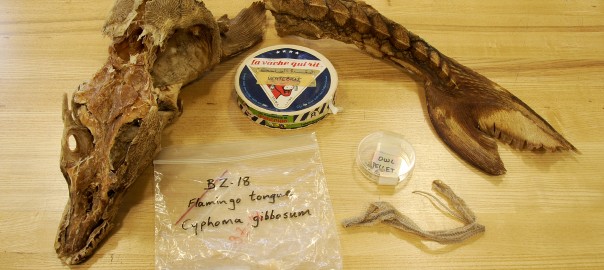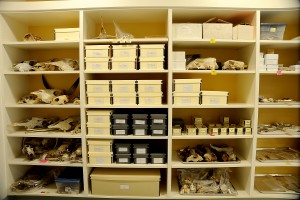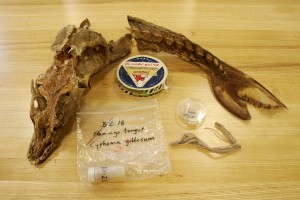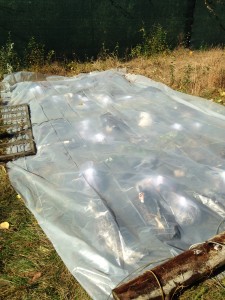Students in Professor Catherine West’s spring course – Archaeology 308: Archaeological Research Design and Materials Analysis – learned to do hands-on archaeological research using collections on loan from the Alutiiq Museum in Kodiak, Alaska. The goal of the course is to give students real archaeological experience as they move on to field school, lab-based research, or employment in archaeology, and to have them think about the application of their data to contemporary people and descendant communities. As a result, our class will be featured in the next newsletter from the Alutiiq Museum, which is seen by museum members around the world!
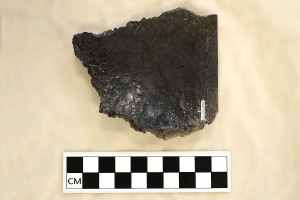 BU undergraduate Ellie Jordan analyzed the treatment and conservation of prehistoric pottery from Olga Bay, Alaska through consultation with conservators at the Boston Museum of Fine Arts. Photo by Michael Hamilton.
BU undergraduate Ellie Jordan analyzed the treatment and conservation of prehistoric pottery from Olga Bay, Alaska through consultation with conservators at the Boston Museum of Fine Arts. Photo by Michael Hamilton.
In the spring semester 2016, students worked in lab groups to generate research questions and hypotheses, to analyze archaeological material, and to present this material in a group presentation and individual, formal lab reports. Students focused on understanding parts of the changing Alutiiq identity and history, prehistoric people’s use of the environment, and their food ways in both the historic and prehistoric periods. From analyzing lithic and pottery assemblages, faunal material, historic sources and oral histories, and legal issues, students generated a variety of creative and thoughtful research projects.
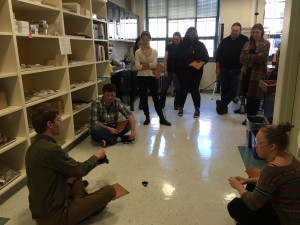 AR308 students learn to flintknap and grind stone with BU graduate student Justin Holcomb. Photo by Peri Tur.
AR308 students learn to flintknap and grind stone with BU graduate student Justin Holcomb. Photo by Peri Tur.
